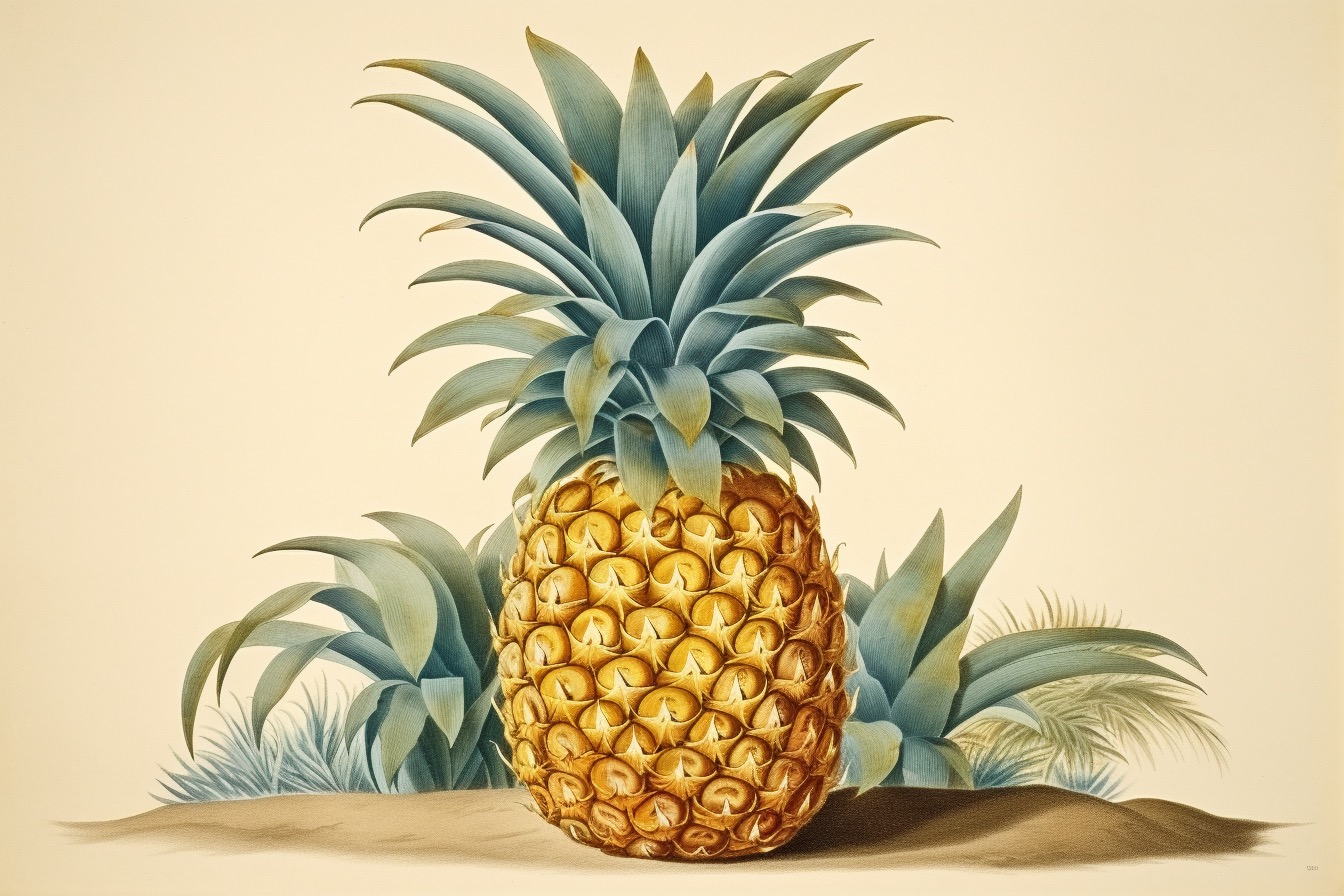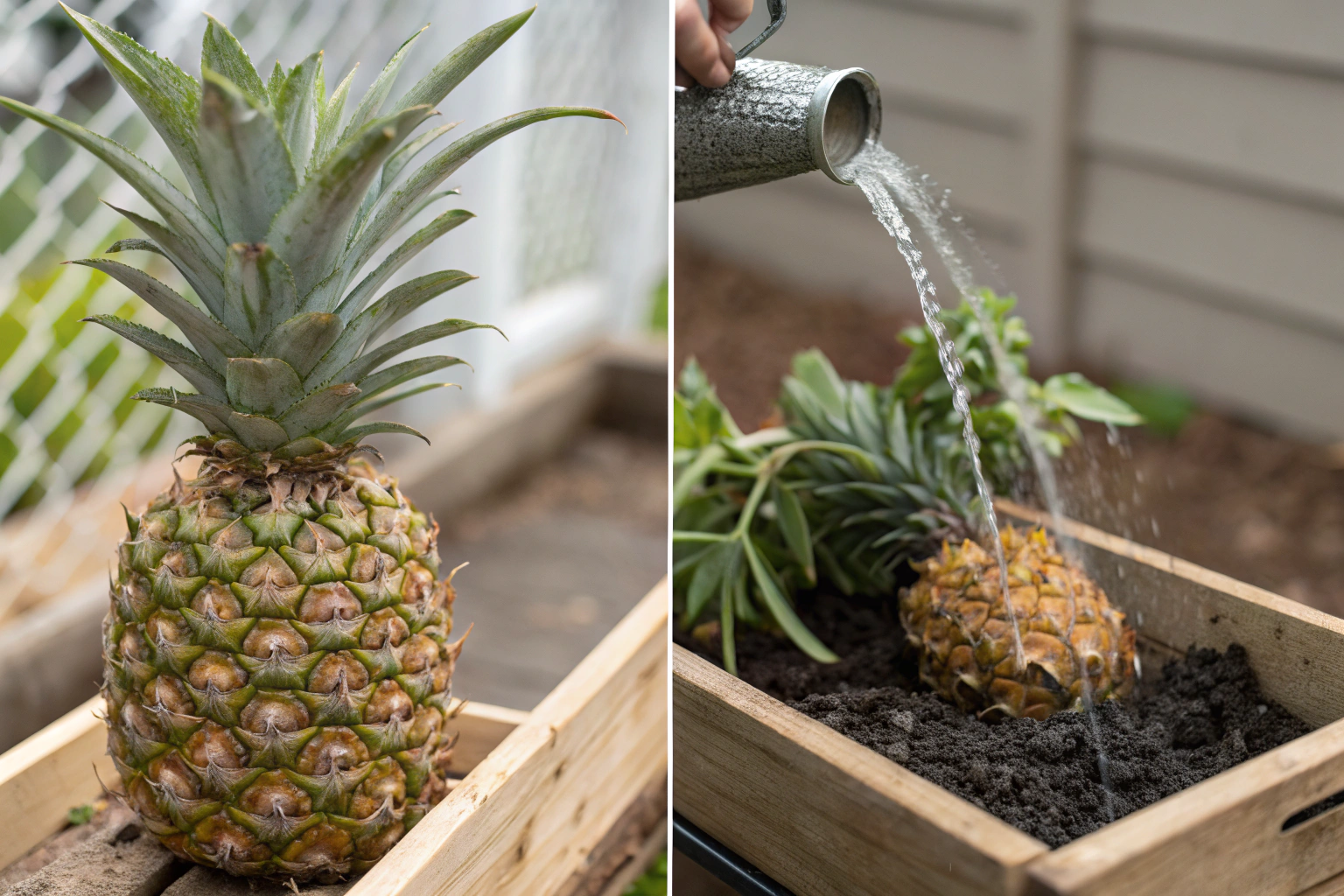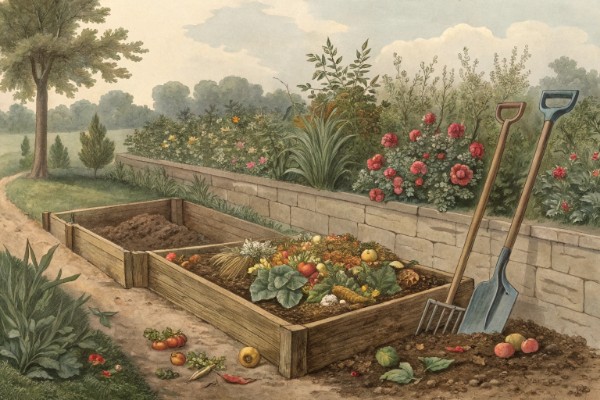How to Grow a Pineapple From a Pineapple Top in Simple Steps

how to grow a pineapple from a pineapple top
Stop tossing your pineapple tops and start growing new fruit right on your countertop. Learning how to grow a pineapple from a pineapple top requires zero green wizardry—just your leftover fruit crown, a pot, and patience. Within weeks, roots sprout, promising to transform kitchen scraps into a tropical trophy plant.
Here's how you turn waste into wonder.
Cheatsheet: Root and Grow Pineapple Indoors or Outdoors
🧰 Tools and Products You'll Need
- Pineapple fruit (ripe, healthy)
- Sharp knife
- Water glass or jar
- Small pot (6-8 in/15-20 cm)
- Potting mix (well-draining)
- Optional: Rooting hormone
✂️ Prepare the Top
- Twist off pineapple crown. Trim fruit flesh off base.
- Peel lower leaves (1 in/2.5 cm) to expose small root buds.
- Air-dry crown 1-2 days to prevent rot.
💧 Root in Water
- Suspend base in water (barely submerged). Place in bright, indirect light.
- Change water every 3 days. Roots often appear in 2-4 weeks.
🪴 Potting Up
- Transplant rooted top into pot with airy soil mix.
- Water well; keep soil moist but not soggy.
🌞 Care for Strong Growth
- Light: Full sun indoors or outdoors.
- Temp: 65-85°F (18-29°C).
- Water: Every 1–2 weeks. Let soil dry slightly.
- Fertilize: Monthly, balanced liquid fertilizer (spring–fall).
- Humidity: Tolerates low, prefers 50%+.
⏳ Patience Pays
- Fruit matures in 18-30 months.
- Homegrown pineapples deliver more vitamin C per cup than apples.
- One plant per top, but top offshoots ("pups") can be replanted for future yields.
🌱 Self-Sufficiency
- Regrow food waste into fresh fruit.
- Enjoy pesticide-free, homegrown desserts and snacks.
- Pineapple leaves and fiber have upcycled craft uses.
Choosing the Perfect Pineapple Top
Last summer, during a lazy afternoon spent cutting pineapple in my kitchen, curiosity tapped me on the shoulder. Could I really sprout a tropical pineapple plant here, from this spiky crown I’d usually toss away?
The answer is yes—and wonderfully simple. First things first: select a fresh, ripe pineapple from the market—firm, fragrant, leaves vibrant green with zero browning or wilting.
This healthy top is your ticket to pineapple cultivation glory.
Preparing Your Pineapple Crown
Grasp the pineapple body firmly and twist off the leafy crown. A quick, decisive twist does the trick—avoiding unnecessary pulp gives the top a cleaner start.
Before planting, peel away the bottom leaves and reveal about an inch (2.5 centimeters) of naked stem. The exposed stem tissue will soon give rise to new roots, eager for life.
Patience pays off: let your pineapple top dry for two to three days. This prevents rot, boosting your chances of success dramatically.
Taking Root: Water Method or Soil?
Here's the crossroads I faced with my first pineapple attempt: glass jar or direct soil planting?
The Water Rooting Method
I opted first for placing the freshly prepped top in a clear jar filled just enough to submerge the lower stem. Change the water every couple days to avoid stagnation.
Within two to four weeks, delicate, ivory-colored roots should emerge from the base—steady signs you're on the right track.
Direct Soil Planting
Alternatively, planting your pineapple top directly into nutrient-rich soil can work beautifully. Choose a well-drained, sandy mix, and bury the stem deeply enough to stand firmly upright.
- Water sparingly, keeping the soil moist but never soggy.
- Position your pot in a warm spot receiving ample indirect sunlight, ideally around 70–85°F (21–29°C).
Cultivating Your Pineapple Plant Indoors or Out
Living in a colder climate, I grew my pineapple indoors by a sunny, south-facing window. But if you're lucky to live somewhere warmer, outdoors is ideal.
If temperatures dip below 50°F (10°C) in your area, move your pineapple indoors during colder months—it'll thank you.
Encouraging Fruit Production
Growing leaves is one thing, but fruiting requires patience—usually around two to three years. Yes, pineapple takes its sweet time; growing your own tests and rewards that patience.
To encourage fruiting, stress conditions mimic tropical dry seasons—slightly reduced watering and a bit of diluted apple core tea (fermented apple peels steeped overnight) introduced monthly. Sounds odd, but trust me, pineapples love it.
Harvesting and Beyond
The moment your pineapple turns fragrant and golden, snip it off and taste the tropical sweetness of gardening victory. Incidentally, a pineapple plant fruiting indoors—or outdoors in a non-tropical region—is a gardening accomplishment worth bragging rights.
Once harvested, your pineapple plant will keep thriving, sprouting baby pups around its base. Carefully separate these pups and repeat the entire growing process—ensuring years of pineapple-growing adventures ahead.
Growing pineapple from a pineapple top rewards patience, curiosity, and a touch of horticultural rebellion—turning kitchen scraps into tropical splendor.
Frequently Asked Questions about Cultivating Pineapple Tops
What type of pineapple top is ideal for planting?
Choose a pineapple crown with a fresh, firm center and strong, vibrant green leaves. Avoid crowns that appear wilted or yellowed, as they may not establish effectively.
Should I root the pineapple top in water before planting?
Rooting the pineapple crown in water is optional but beneficial. Place the base of the trimmed crown in a shallow container with water, keeping the leaf tips above water level. Within two to three weeks, roots should develop, signaling readiness for planting in soil.
What soil conditions are best for pineapple growth?
Pineapple plants prefer soil that drains effectively, maintaining moderate moisture without waterlogging the roots. Combine equal parts of potting soil and coarse sand or perlite for optimal soil consistency.
What is the ideal climate for pineapple plants?
Pineapples thrive in warm, sunny environments with daytime temperatures between 68°F-85°F (20°C-29°C) and no risk of frost. They flourish indoors in cooler climates if positioned in bright sunlight near a south-facing window.
How frequently should I water the pineapple plant?
Water moderately, allowing soil to become slightly dry between watering sessions. Typically, watering once a week is sufficient, but adjust frequency according to seasonal changes and indoor humidity levels.
How long does it take for a pineapple plant to bear fruit?
Patience is essential, as pineapple plants usually require 18 to 24 months to produce fruit. Consistent care and proper lighting conditions encourage earlier and healthier fruiting.
Can pineapple plants survive indoors year-round?
Pineapples perform well indoors if provided ample sunlight and stable temperatures. Maintain consistent warmth and rotate pots periodically to ensure balanced growth and fruiting success.
What pot size is recommended for pineapple cultivation at home?
Begin with a container approximately 6-8 inches (15-20 cm) in diameter to comfortably accommodate early root growth. Transplant to a larger container as the plant matures to sustain continued growth and fruit production.
How to grow a pineapple from a pineapple top has its own kind of satisfaction. You start with scraps and wind up with a living, spiky trophy. Patience is non-negotiable; roots take weeks, fruit takes years, but every new leaf is a small win. Use sharp tools, work with clean water, and set your top in bright, indirect light. Warmth matters, so don’t rush to set it out too early. Good drainage is everything—soggy roots are silent killers. Try pine bark mulch to lock in moisture but still let air flow.
Once you master how to grow a pineapple from a pineapple top, it’s hard not to look at other kitchen scraps with a new eye. For more ideas, see these easy vegetables to grow in raised beds, and see how far you can stretch a grocery list. Every pineapple started somewhere. Yours starts now.
The Homesteader's Take: Pineapple Tops for Sustainable Living
Self-Sufficient Fruit Source
Growing pineapples from tops requires minimal resources but provides a renewable fruit supply. A well-maintained pineapple plant produces fruit every 2-3 years, ensuring steady harvests and reduced grocery trips.
Soil and Composting Essentials
- Combine equal parts sandy loam, compost, and perlite for optimal growth medium.
- Add kitchen scraps like banana peels and eggshells to compost to enrich soil nutrients naturally.
Efficient Water Usage for Sustainability
Water pineapple tops sparingly (weekly during dry periods), just moistening soil, not soaking. Conserves water resources, ideal for off-grid or drought-prone homesteads.
Optimizing Growth Conditions
- Maintain temperatures consistently between 65-85°F (18-29°C) for best fruiting results.
- Grow in portable containers to transition easily indoors during frost or excessively cool weather.
Health and Nutrition From Homegrown Pineapples
Homegrown pineapples offer fresh vitamin C, manganese, and bromelain (natural enzyme promoting digestion and reducing inflammation). Consume ripe pineapple within hours of harvest for peak nutritional value.
Resourceful Propagation
After first harvest, pineapple plants produce side shoots ("pups"). Remove these to propagate additional plants, maximizing your homestead's productivity at zero additional cost.
Find out which plants will thrive in your garden!
Answer a few fun questions and get custom plant recommendations perfect for your space. Let’s grow something amazing together!

start your season






